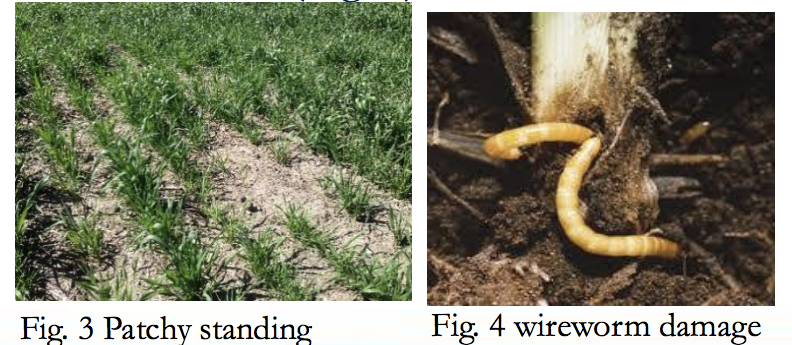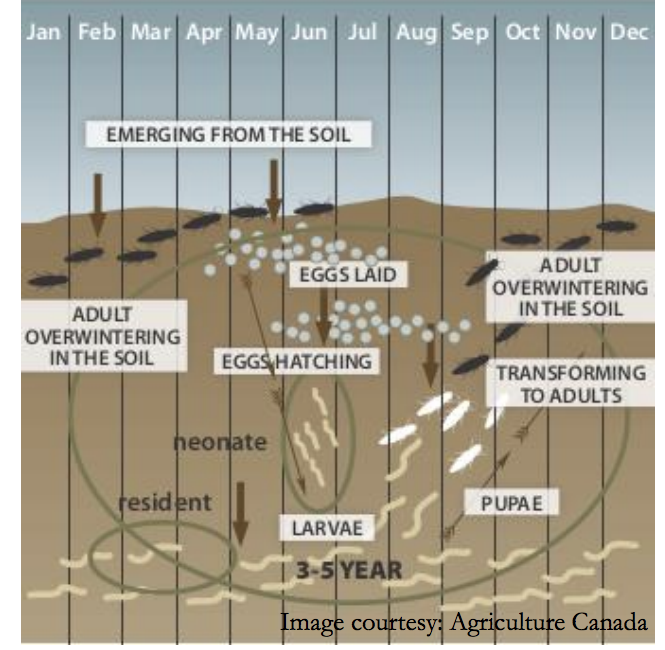Wireworm
Overview
Wireworms Limonius californicus (Mannerheim) and Hypnoidus bicolor (Eschscholtz) (Coleoptera: Elateridae) have been recognized as a serious pest of wheat and barley in the Golden Triangle areas of Montana. Due to their long life cycle and cryptic habitat, wireworms are difficult to control.
Damage
Wireworms feed on seeds, roots and young seedlings. Adult click beetles cause no crop damage. Some of the main signs that indicate the field infestation of wireworm are:
- Hollowed seeds
- Wilted plants with dead central leaves
- Thin stands (Fig. 3)
Life Cycle

Wireworm Research at WTARC
Research in 2013 evaluted the efficacy of entomopathogenic fungi against wireworm. Three fungi when applied as granules in furrow or as soil drenches were more effective than when used as seed-coating treatments, and provided an efficacy comparable or superior to imidacloprid.
Thresholds
- 2-4 average number of wireworms per bait trap
- Although soil sampling is problematic, some researchers recommend treatment if wireworms are visible during discing or seeding in a field
Download this information in PDF format by clicking this link.
